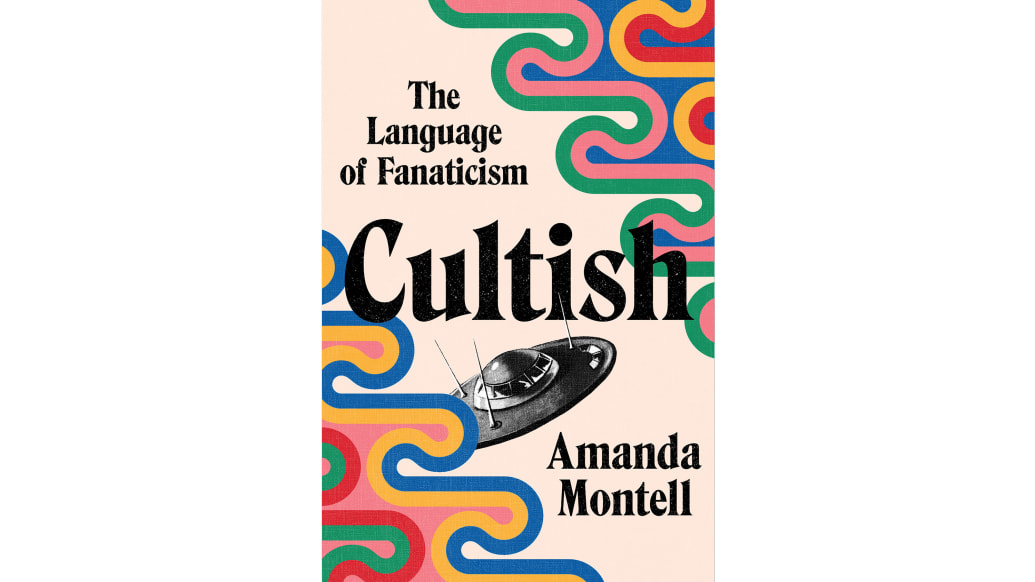Cultish groups are an all-out American obsession. All any of my friends could talk about the week I started writing this book was the 2019 folk horror film Midsommar, about a fictional murderous Dionysian cult in Sweden characterized by psychedelic-fueled sex rituals and human sacrifices. And all anyone was talking about as I edited the book in 2020 were The Vow and Seduced, dueling docuseries about NXIVM, the self-help scam turned sex-trafficking ring. The well of cult-inspired art and intrigue is bottomless. When it comes to gurus and their groupies, we just can’t seem to look away.
I once heard a psychologist explain that rubbernecking results from a very real physiological response: You see an auto accident, or any disaster—or even just news of a disaster, like a headline—and your brain’s amygdala, which controls emotions, memory, and survival tactics, starts firing signals to your problem-solving frontal cortex to try to figure out whether this event is a direct danger to you. You enter fight-or-flight mode, even if you’re just sitting there.
The reason millions of us binge cult documentaries or go down rabbit holes researching groups from Jonestown to QAnon is not that there’s some twisted voyeur inside us all that’s inexplicably attracted to darkness. It’s because we’re still hunting for a satisfying answer to the question of what causes seemingly “normal” people to join—and, more important, stay in—fanatical fringe groups with extreme ideologies. We’re scanning for threats, on some level wondering, is everyone susceptible to cultish influence? Could it happen to you? Could it happen to me? And if so, how?
Our culture tends to provide pretty flimsy answers to questions of cult influence, mostly having to do with vague talk of “brainwashing.” Why did all those people die in Jonestown? “They drank the Kool-Aid!” Why don’t abused polygamist sister wives get the hell out of Dodge as soon as they can? “They’re mind controlled!” Simple as that.
But it’s actually not that simple. In fact, brainwashing is a metaphorical, pseudoscientific concept that the majority of psychologists I interviewed denounce. (First, “brainwashing” disregards people’s very real ability to think for themselves. And second, it presents an untestable hypothesis. You can’t prove that brainwashing doesn’t exist. The minute you say someone is “brainwashed,” the conversation ends there.) Truer answers to the question of cult influence can only arrive when you ask the right questions: What techniques do charismatic leaders use to exploit people’s fundamental needs for community and meaning? How do they cultivate that kind of power?
The answer, as it turns out, is not some freaky mind-bending wizardry that happens on a remote commune where everyone dons flower crowns and dances in the sun. (That’s called Coachella ... which, one could argue, is its own kind of “cult.”) The real answer all comes down to words.
From the crafty redefinition of existing words (and the invention of new ones) to thought-terminating clichés, powerful euphemisms, secret codes, renamings, loaded buzzwords, chants and mantras, “speaking in tongues,” forced silence, even hashtags, language is the key means by which all degrees of cultlike influence occur. Exploitative spiritual gurus know this, but so do pyramid schemers, politicians, CEOs of start-ups, online conspiracy theorists, workout instructors, even social media influencers.
In both positive ways and shadowy ones, “cult language” is, in fact, something we hear and are swayed by every single day. Our speech in regular life—at work, in Spin class, on Instagram—is evidence of our varying degrees of “cult” membership. You just have to know what to listen for. Indeed, while we’re distracted by the Manson Family’s peculiar outfits and other flashy “cult” iconography, what we wind up missing is the fact that one of the biggest factors in getting people to a point of extreme devotion, and keeping them there, is something we cannot see.
Language is a leader’s charisma. It’s what empowers them to create a mini universe—a system of values and truths—and then compel their followers to heed its rules. In 1945, the French philosopher Maurice Merleau-Ponty wrote that language is human beings’ element just as “water is the element of fish.” “Without language, there are no beliefs, ideology, or religion,” John E. Joseph, a professor of applied linguistics at the University of Edinburgh, wrote to me from Scotland. “These concepts require a language as a condition of their existence.” Without language, there are no “cults.”
Certainly, you can hold beliefs without explicitly articulating them, and it’s also true that if followers do not want on any level to buy into their leaders’ messages, no collection of words could force them into it. But with a glimmer of willingness, language can do so much to squash independent thinking, obscure truths, encourage confirmation bias, and emotionally charge experiences such that no other way of life seems possible. The way a person communicates can tell us a lot about who they’ve been associating with, who they’ve been influenced by. How far their allegiance goes.
The motives behind culty-sounding language are not always crooked. Sometimes they’re quite healthy: boosting solidarity or rallying people around a humanitarian mission. One of my best friends works for a cancer nonprofit and brings back amusing stories of the love-bomb-y buzzwords and quasi-religious mantras they repeat to keep fund-raisers hyped: “Someday is today”; “This is our Week of Winning.” “It reminds me of the way multilevel marketing people talk,” she tells me (referencing culty direct sales companies like Mary Kay and Amway). “It’s cultlike, but for a good cause. And hey, it works.”
Whether wicked or well-intentioned, language “provides a culture of shared understanding,” said Eileen Barker, a sociologist who studies new religious movements at the London School of Economics. But wherever there are fanatically worshipped leaders and belief-bound cliques, some level of psychological pressure is at play. This could be as quotidian as your average case of FOMO, or as treacherous as being coerced to commit violent crimes. “Quite frankly, the language is everything,” one ex-Scientologist told me in a hushed tone during an interview. “It’s what insulates you. It makes you feel special, like you’re in the know, because you have this other language to communicate with.”
What do I mean exactly when I use “cult” to describe all these groups? As it turns out, coming up with one conclusive definition for this word is tricky at best. There’s a reason for the semantic murkiness. It’s connected to the fact that the fascinating etymology of “cult” corresponds precisely to our society’s ever-changing relationship to spirituality, community, meaning, and identity—a relationship that’s gotten rather… weird. Language change is always reflective of social change, and over the decades, as our sources of connection and existential purpose have shifted due to phenomena like social media and withdrawal from traditional institutions (mainstream religion, government, healthcare), we’ve seen the rise of more alternative subgroups—some dangerous, some not so much. “Cult” has evolved to describe them all. In modern discourse, someone could apply the word “cult” to a new religion, a group of online radicals, a start-up, and a makeup brand all in the same breath.
Like everything in life, there is no good cult/bad cult binary; cult influence falls on a spectrum. Steven Hassan, a mental health counselor, author of The Cult of Trump, and one of the country’s foremost cult experts, has described an influence continuum representing groups from healthy and constructive to unhealthy and destructive. It is to qualify this wide gamut of cultlike communities that we’ve come up with colloquial modifiers like “cult-followed,” “culty,” and (indeed) “cultish.”
The language followers use—including me, including you—can offer clues, revealing how cultish we really are.

Courtesy Amanda Montell
From the book CULTISH by Amanda Montell. Copyright © 2021 by Amanda Montell. Published by Harper Wave, an imprint of HarperCollins Publishers. Reprinted by permission.

